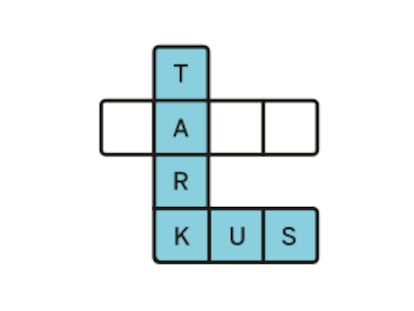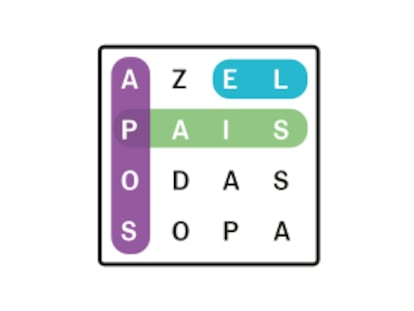México: Narcotráfico
Cable sobre la ineficaz vigilancia de México y Guatemala sobre su frontera común
El pasado mes de enero la embajada de EE UU en México constata que sólo 125 policías mexicanos de inmigración vigilan los casi mil kilómetros de frontera con Guatemala
| ID: | 245360 |
| Date: | 2010-01-25 17:06:00 |
| Origin: | 10MEXICO77 |
| Source: | Embassy Mexico |
| Classification: | CONFIDENTIAL |
| Dunno: | 09MEXICO2952 |
| Destination: | VZCZCXRO7275 RR RUEHCD RUEHHO RUEHNG RUEHNL RUEHRD RUEHRS DE RUEHME #0077/01 0251722 ZNY CCCCC ZZH R 251706Z JAN 10 FM AMEMBASSY MEXICO TO RUEHC/SECSTATE WASHDC 0177 INFO ALL US CONSULATES IN MEXICO COLLECTIVE RHEFHLC/DEPT OF HOMELAND SECURITY WASHINGTON DC RHEHAAA/NATIONAL SECURITY COUNCIL WASHINGTON DC RHMFISS/CDR USNORTHCOM PETERSON AFB CO RHMFISS/CDR USSOUTHCOM MIAMI FL RHMFISS/DEPT OF JUSTICE WASHINGTON DC RUCPDOC/DEPT OF COMMERCE WASHINGTON DC RUEABND/DEA HQS WASHINGTON DC RUEATRS/DEPT OF TREASURY WASHINGTON DC RUEHME/AMEMBASSY MEXICO |
C O N F I D E N T I A L SECTION 01 OF 03 MEXICO 000077 SENSITIVE SIPDIS E.O. 12958: DECL: 2020/01/25 TAGS: SNAR, PREL, PGOV, PHUM, KCRM, MX SUBJECT: MEXICO: TAPACHULA ARMS CONFERENCE FOCUSES ON SOUTHERN BORDER PROBLEMS REF: 09 MEXICO 2952 CLASSIFIED BY: Gustavo Delgado, Political Minister Counselor; REASON: 1.4(B), (D) 1. (SBU) Summary: Two recent arms trafficking conferences -- one in September focused on the northern border (reftel) and a subsequent one in Tapachula, looking at the southern border -- highlighted lax border controls and suggested ways to improve law enforcement efforts to stem the tide of illegal guns. This cable reports on the Tapachula discussion, and off-site trips to three different border locations, which offered dramatic evidence of the porous southern border and serious resource shortfalls, and helped focus attention on ways to help Mexico, Guatemala and Belize address shared border security challenges. End Summary. Follow Up on the Southern Border --------------------------------------------- -- 2. (SBU) Many of the GOM and USG law enforcement officials who participated in the Tapachula conference in October had also attended the earlier Northern Border Conference in Phoenix. This time, however, Belize's National Police and representatives from Guatemala's Attorney General's office also participated, adding a new wrinkle to the discussion by presenting an overview of arms trafficking laws in their countries and suggesting ways in which they could improve coordination with Mexico and the U.S. with regards to illegal arms trafficking. The Ground Truth: Laws Not Enough --------------------------------------------- ----- 3. (SBU) Each country highlighted internal controls that regulate the sale, distribution, and transport of weapons and ammunition, drawing attention to sanctions against the unlawful transport of weapons across any national boundary. Unfortunately, our visit to three border crossings between Guatemala and Mexico in Chiapas revealed neither country presently works seriously to enforce these laws. 4. (SBU) At the first border crossing in Talisman, Chiapas, the conference participants witnessed almost as many individuals crossing the border illegally as legally. Immigration officials conjectured that individuals crossing illegally under the bridge were either visiting family members on the other side of border or engaging in informal commerce. Although the delegation did not have an opportunity to talk with any of the individuals crossing under the bridge at the border, it appeared the majority were carrying what appeared to be personal belongings rather than items of commerce. 5. (SBU) The border officials made every attempt to illustrate a secure border crossing, but their explanations highlighted serious procedural inconsistencies that undermine effective controls. While border officials inspect 100 percent of the individuals and cars crossing the bridge legally, the data collected is stored in a local database that is not connected to federal or international criminal databases. Border officials are also hampered by their lack of access to national registries that would allow them to determine if the individuals crossing are on any criminal or terrorist watchlists. Mexican law allows individuals to cross the border with an "original" identification document but does not prescribe what constitutes an "original" document. As long as the individual agrees to confine one's visit to the state of Chiapas MEXICO 00000077 002 OF 003 and return to Guatemala after an undefined period of time, one is granted admission to the country. Limited resources also undermine the effort: while there are 30,000 U.S. CBP officers on the 1,926 mile Mexican/U.S. border, only 125 Mexican immigration officials monitor the 577 mile border with Guatemala. Mexican immigration officials repeatedly confirmed that they do not have the manpower or resources to direct efforts effectively along the southern border. 6. (SBU) The tour continued to the Ciudad Hidalgo station on the Pan American highway, the border crossing with highest number of legal crossings in Chiapas. Border officials estimated that on a daily basis 95% of all exports, 350-400 shipments; and 26% of all imports, flow through these border crossings to and from Central America. Additionally, 80-100 carloads of visitors pass through the border on a daily basis. While officials displayed an impressive array of non-intrusive inspection equipment, e.g., hand-held spectrometers for the identification of drugs and explosives and gamma-ray inspection equipment for large containers, these devices are not incorporated effectively into border control protocols. Border officials were inconsistent in using their inspection equipment to check the cabs of trucks and there is no revealed coordinated approach between Mexico and Guatemala to share information that would reduce crossing times and avoid duplicative inspections, as, for example, is being done at certain places in the Mexican-U.S. border. 7. (SBU) The final border crossing only served to re-inforce the concerns that emerged from the first two sites the group visited. One of the most memorable images of the day was the steady flow of rafts transporting people and goods across the river illegally within sight of the legal border crossing. Family Feuds Prevent Internal Coordination --------------------------------------------- --------------- 8. (C) The last part of the conference consisted of open and frank panel discussions. The most interesting discussion focused on information and intelligence sharing among Mexican agencies, including the Secretariat of National Defense (SEDENA), the Marine Secretariat (SEMAR), the Office of the Attorney General (PGR), and the Center for Investigation and National Security (CISEN). The discussion started with many self-congratulatory comments from panel members on how well their respective organizations collect and share information. The lack of coordination between federal and state officials became apparent when a representative from the Chiapas State Attorney General's Office complained that his state does not receive any information from the federal authorities and has no input or visibility in the federal process. While the state representative acknowledged a common perception of corruption at the state level, he argued it was counterproductive and illogical to exclude them from the process. Other participants recognized an acceptable process for intelligence collection, but complained about inadequate dissemination of actionable information and insufficient formal mechanisms for sharing collected information. Conclusions and Follow Up Actions --------------------------------------------- ----- 9. (SBU) The conference generated a list of eight conclusions, including few measurable actions. Several of the conclusions MEXICO 00000077 003 OF 003 focused on the need to explore mechanisms for better information-sharing with international partners or internally. There was consensus on the need to regionalize arms-trafficking efforts, specifically by including Guatemala in future GC Armas meetings in Mexico. Guatemalan representation pledged to review current procedures and incorporate practices that will improve interagency coordination and information. Mexico and Guatemala agreed to work on practical measures to facilitate the flow of information between the two countries on the issue of arms trafficking. Belize also suggested a formal dialogue with Mexico on increasing the number of formal border crossings between the two countries, as a way to improve border controls. Comment -------------- 10. (C) This conference highlighted weak controls on Mexico's southern border that are contributing to problems with illegal migration and guns/drugs smuggling. Much more needs to be done to improve secure information sharing among federal agencies and between Federal and State officials in Mexico. Better cooperation among Mexico, Guatemala, and Belize could also help coordinate current efforts by each state and ensure that existing laws are enforced. The conference represented a small first step in that direction, a follow-up meeting in February 2010 will provide another opportunity to strengthen joint efforts. FEELEY |
Traduce este documento »
Traducción automática. Puede que el texto traducido no sea fiel al original
Únete a EL PAÍS para seguir toda la actualidad y leer sin límites.
Suscríbete_







































































